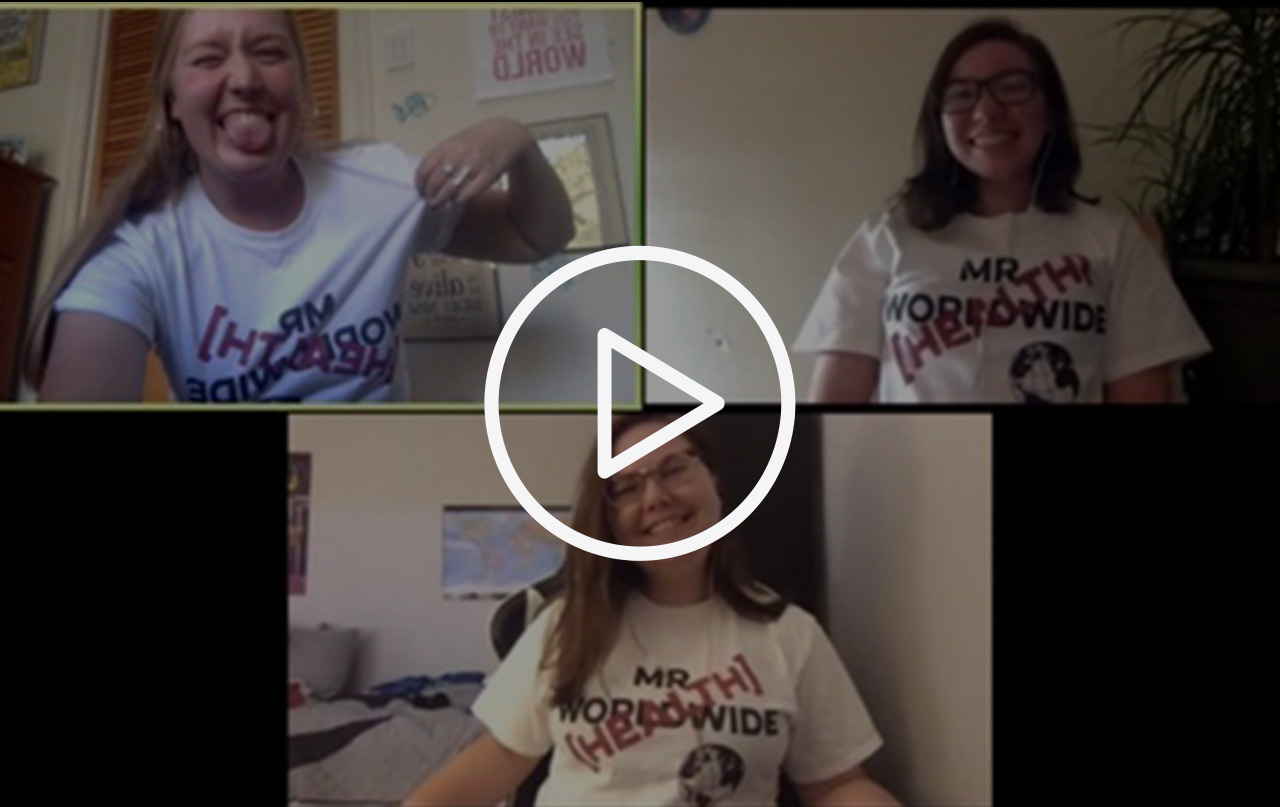Health Technology Showcase
Five Questions and an Elevator Pitch:
Team Mr. Worldwide Health
 In this short video clip, a member of the Mr. Worldwide Health team explains the need they set out to address and how their solution works.
In this short video clip, a member of the Mr. Worldwide Health team explains the need they set out to address and how their solution works.
1. What’s the need your project seeks to address?
Marissa: Onchocerciasis, or river blindness, is a parasitic disease found primarily in sub-Saharan Africa. It causes extreme itchiness and bumps under the skin, but can lead to blindness if it’s not treated. One of the biggest problems is accurately diagnosing people with the condition so they can be treated promptly. The standard-of-care diagnostic approach is a series of six skin snips that are examined for the presence of larvae. It’s a painful, invasive test that has false negative rates of over 40% – especially for patients with a ‘light’ infection, meaning they have a low parasitic load. Our goal was to develop an inexpensive way for community health workers in central Africa to more accurately diagnose and monitor these patients to ensure appropriate treatment.
2. How does your solution work?
Kelsie: We developed the Onchoscope, a low-cost microscope that uses blue light to image the capillary beds of the fingernail to identify and measure the presence of microfilariae, or worms in their larval stage, in the bloodstream. When we first focused on exploring non-invasive diagnostic approaches, we realized that the fingernails are one of the access points where you can look inside the body from the outside. Then we found a paper that described imaging the capillary beds and nails to get a white blood cell count for leukemia patients. This works because of the blue entoptic phenomenon – in blue light, red blood cells look dark and white blood cells, as well as the parasites we’re trying to detect, appear optically clear, like gaps within the bloodstream. With our solution, a community health worker will image the patient’s hand using the Onchoscope and then run the images through our computer algorithm, which will provide a yes/no diagnosis as well as a microfilarial count to quantify the parasitic load.
3. What motivated you to continue working on your project, and what activities did you undertake?
Claire: It’s a project we really care about and believe in. Onchocerciasis is an understudied disease. But it affects so many people – about 125 million people live in at-risk areas, so it’s something that really matters. We also believe in our solution, which is creative and technically elegant in the way it addresses the need.
 Prototype onchoscopes built by team members at home.
Prototype onchoscopes built by team members at home.
Before the COVID pandemic, our original plan was to develop a works-like prototype of the Onchoscope so that we could start to do benchtop testing and demonstrate proof-of-concept through human testing in Africa. Instead, we’re building Onchoscopes at home with the goals of improving reproducibility, stability, and image quality so that they are easy to build and use outside of a university lab. We’re also writing manuals and instructions so that other people can continue the project and hopefully bring it to fruition.
4. What’s one of the most important things you learned from advancing your project beyond class?
Kelsie: We learned a lot about applying for grants, which we see as an important avenue to keep the project moving forward. Interestingly, this was not something any of us had done before or learned about in a class, and it’s very detailed and specific. We’ve spent a lot of time seeking relevant grants and then writing the applications. Each one is different! But we’ve gotten help from [Capstone instructor] Ross Venook, the Prakash Lab [at Stanford], and others who have a deep understanding of our project. Their input has been valuable in enabling us to bring together the most important information about the unmet need and our solution in a coherent way.
5. What advice do you have for other students who want to become health technology innovators?
Marissa: Teamwork is key. We’re all strong leaders, and this was a complicated project. We were really honest with each other about recognizing and appreciating good work, and also holding each other accountable when we saw things slipping through the cracks. We had conflict of ideas, but not conflict between team members because the way we communicated openly and shared feedback helped us build a strong foundation. At the same time, we came together around the value and importance of what we were trying to do. Having an idea we all really believed in, and where we felt we could make a difference, gave us the emotional energy to keep going in challenging times.
Original team members: Marissa MacAvoy, Claire Lamadrid, Kelsie Wysong, Clay Ellington, Julia Schaepe
Course: Senior Bioengineering Capstone
Biodesign NEXT Funding: Awarded for spring quarter 2020
